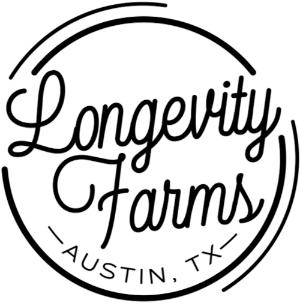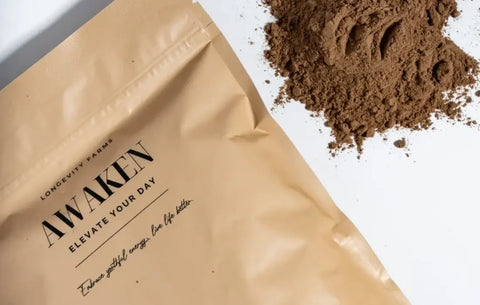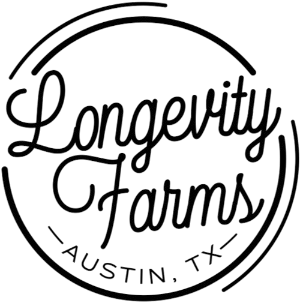Both oxidative stress and NAD (nicotinamide adenine dinucleotide) are crucial factors in maintaining cellular health and combating aging. Oxidative stress refers to an imbalance between reactive oxygen species (ROS) and the cell’s antioxidant defenses, leading to damage to biomolecules. When ROS levels rise, they inflict oxidative damage to cells, harming DNA, proteins, and lipids, which the cell must urgently repair. NAD⁺, on the other hand, is a vital coenzyme present in all living cells, involved in energy metabolism and cellular repair processes. Maintaining healthy NAD levels is essential for cells to produce energy and respond to stress. However, excessive oxidative stress can disrupt NAD⁺ homeostasis by consuming NAD⁺ faster than it can be replenished. In this article, we will examine how oxidative stress affects NAD⁺ homeostasis, the role of NAD⁺ in cellular function and repair, and strategies to naturally support and supplement NAD levels.

The Role of NAD⁺ and NADH in Cellular Metabolism
Nicotinamide adenine dinucleotide (NAD) is a central coenzyme in cellular metabolism, existing in two forms: the oxidized NAD⁺ and the reduced NADH. While NAD⁺ often receives most of the attention for its role in energy production and cellular maintenance, NADH is equally vital. NADH acts as a crucial electron carrier, and the continuous cycling between NAD⁺ and NADH underpins the flow of energy within cells. This interconversion is fundamental for extracting energy from nutrients and making it available for all cellular processes.
NAD⁺ functions as an electron acceptor in metabolic reactions. During glycolysis and the citric acid cycle, enzymes transfer electrons from fuel molecules such as glucose to NAD⁺, reducing it to NADH. Each molecule of NADH now holds high-energy electrons captured from the original nutrient. This reduction is not simply a chemical curiosity; it is the means by which cells temporarily store the energy released from food. The process is highly regulated and occurs at multiple steps in both glycolysis (in the cytosol) and the citric acid cycle (in the mitochondrial matrix). For example, in glycolysis, the enzyme glyceraldehyde-3-phosphate dehydrogenase catalyzes the reduction of NAD⁺ to NADH, and in the citric acid cycle, several dehydrogenases do the same as they break down acetyl-CoA.
The true power of NADH comes into play during oxidative phosphorylation in the mitochondria. Here, NADH donates its high-energy electrons to the electron transport chain, a series of protein complexes embedded in the inner mitochondrial membrane. As NADH is oxidized back to NAD⁺, its electrons move through the chain, ultimately reducing oxygen to water. The energy released during this transfer is harnessed to pump protons across the mitochondrial membrane, creating a proton gradient. This gradient then drives ATP synthase, the enzyme responsible for producing ATP—the universal energy currency of the cell.
NAD in Cells and Energy Metabolism
NAD⁺ is often called the “central currency” of cellular energy. It plays a role in NAD in cells by shuttling electrons during metabolic reactions, thus driving the production of ATP, the cell’s energy molecule. In its oxidized form (NAD⁺) and reduced form (NADH), this coenzyme participates in critical metabolic pathways, including glycolysis, the citric acid cycle, and mitochondrial oxidative phosphorylation. Without NAD⁺, cells could not efficiently convert nutrients into usable energy. NAD⁺ also serves as a pivotal signaling molecule. It serves as a substrate for enzymes such as sirtuins and PARPs (poly-ADP-ribose polymerases), which regulate gene expression, DNA repair, and cell survival. NAD⁺ is a universal biomolecule involved in numerous redox reactions in all living organisms, and it functions not only as an energy-transfer cofactor but also as the fuel for PARP DNA-repair enzymes and sirtuin deacetylase enzymes. Through these enzymes, NAD⁺ influences processes such as stress response, genomic stability, and aging.
Because NAD⁺ is so central to metabolism, its availability must be tightly regulated – a concept known as NAD⁺ homeostasis. Cells continuously recycle NAD⁺ from precursors (like niacin/vitamin B₃ and amino acid tryptophan) via salvage pathways to maintain a constant pool. In young, healthy cells, the production and consumption of NAD are balanced. This balance supports high ATP output, active DNA repair, and proper cell signaling. NAD⁺ is compartmentalized within the cell (cytosol, mitochondria, nucleus), and each pool supports specific functions. For instance, mitochondrial NAD⁺ is crucial for fueling the electron transport chain and thus ATP generation. Consequently, the best nicotinamide riboside supplements focus on boosting NAD⁺-dependent pathways to improve cellular energy.
Consequences of NAD⁺/NADH Ratio Dysregulation
An imbalanced NAD⁺/NADH ratio can have profound and far-reaching consequences for cellular health and function. This ratio acts as a central regulator of the cell’s redox environment, and its disruption can trigger a cascade of detrimental effects at both the cellular and systemic levels. When the balance shifts, cells may experience impaired metabolic flexibility and increased vulnerability to damage.
Oxidative Stress and NAD Homeostasis
During oxidative stress, cells experience an overproduction of ROS (such as superoxide, hydrogen peroxide, and hydroxyl radicals). These ROS can cause extensive damage to cellular components, a phenomenon described as the cellular stress response to injury. One major target of ROS is DNA: oxidation of DNA strands results in lesions and breaks that threaten genomic integrity. The cell’s immediate reaction is to activate repair pathways, notably the poly(ADP-ribose) polymerase (PARP) enzymes. PARP-1 detects DNA strand breaks (a type of oxidative damage to cells) and catalyzes the addition of ADP-ribose units onto proteins as a signal to recruit DNA repair machinery. However, PARP’s activity comes at a cost: it consumes NAD⁺ as a substrate for each ADP-ribosylation cycle. Under moderate stress, this is manageable – NAD⁺ is used to fix DNA and then recycled through salvage pathways. But under intense oxidative stress, the repair demand can skyrocket. Excessive DNA damage leads to over-activation of PARP, which in turn causes rapid NAD⁺ catabolism and can deplete the cell’s NAD⁺ reserves.
This creates a vicious cycle: high ROS causes DNA damage; DNA repair enzymes soak up NAD⁺ to respond; if NAD⁺ falls too low, the cell’s energy production falters, and many NAD-dependent signaling pathways shut down. In extreme cases, PARP overactivation resulting from a severe oxidative insult can completely deplete cellular NAD⁺, leading to an “energy crisis” where ATP can’t be produced, and the cell undergoes death. Studies have shown that sustained PARP activation triggered by intense oxidative DNA damage can cause NAD⁺ depletion and subsequent cell death. Beyond PARP, other NAD⁺ consumers also come into play under oxidative stress.
The enzyme CD38 (a NADase involved in calcium signaling and immune responses) is often upregulated during inflammation and oxidative stress; it, too, consumes NAD⁺ and has been implicated in age-related NAD⁺ decline. Sirtuins, which generally help the cell adapt to stress by adjusting metabolism and enhancing antioxidant defenses, require NAD⁺ as well – so if PARP and CD38 are siphoning off NAD, sirtuin activity may diminish. The net effect is that severe oxidative stress can knock NAD⁺ homeostasis out of balance: NAD⁺ gets used up faster than it’s recycled, compromising the cell’s ability to cope with the stress. This highlights why antioxidant defenses (like glutathione and enzymes such as catalase and SOD) are important. They mitigate ROS and thereby indirectly protect the cell’s NAD⁺ pool. Maintaining NAD⁺ homeostasis in the face of oxidative stress is therefore critical.
NAD⁺ Decline with Aging and Oxidative Damage
One of the hallmarks of aging at the cellular level is a decline in NAD⁺ availability. In aged tissues, NAD⁺ levels tend to be significantly lower than in young tissues, and accumulating oxidative damage is thought to be a major contributor to this decline. Over the course of a lifetime, cells are exposed to continuous, low-level oxidative stress. Although this stress is not immediately lethal, the cumulative DNA damage and cellular wear and tear gradually activate NAD⁺-consuming repair enzymes at a higher baseline rate. Aging cells are constantly “spending” NAD⁺ to counteract ongoing damage. If NAD⁺ recycling or production doesn’t keep up, a net NAD⁺ deficit develops. Indeed, a growing body of evidence suggests that NAD⁺ levels decline with age and that an imbalance between NAD⁺ production and consumption can derail fundamental molecular processes, contributing to accelerated cellular aging.

How to Increase NAD+ Levels Naturally
While aging and stress can lower NAD⁺, the good news is that everyday lifestyle choices can help sustain or even raise NAD⁺ levels. Here are several natural NAD boosters that can support your body’s NAD⁺ homeostasis:
-
Healthy Diet (Vitamin B₃ and tryptophan): Eating a balanced diet rich in NAD⁺ precursors can provide the raw materials for NAD⁺ synthesis. Niacin (vitamin B₃ in forms like nicotinic acid or nicotinamide) and tryptophan (an amino acid) are dietary precursors that the body can convert into NAD⁺ via metabolic pathways. Foods high in niacin include poultry, fish, peanuts, whole grains, and green vegetables. Tryptophan is abundant in protein sources like turkey, chicken, dairy, and legumes. Ensuring adequate B-vitamin intake (B₃, B₂, B₆) supports the NAD⁺ salvage pathway that recycles nicotinamide into NAD⁺.
-
Caloric Restriction & Fasting: Eating fewer calories triggers a mild stress that actually boosts the activity of NAD⁺-producing enzymes, such as NAMPT (nicotinamide phosphoribosyltransferase). CR has been shown to elevate NAD⁺ levels and the NAD⁺/NADH ratio, activating sirtuins. Fasting similarly causes an energy stress that cells counteract by increasing NAD⁺ salvage and enhancing mitochondrial efficiency. These practices essentially signal the body to become thrifty and repair-oriented: NAD⁺ is ramped up, which turns on sirtuins and other longevity pathways.
-
Regular Exercise: Exercise is one of the most powerful natural NAD⁺ boosters. During aerobic exercise, muscles contract and require more ATP, causing an increase in NAD⁺-consuming reactions and a corresponding upregulation of NAD⁺ synthesis to meet demand. Repeated exercise triggers adaptive changes: it increases the amount of NAD⁺ in tissues by inducing higher expression of NAMPT, enhancing the NAD⁺ salvage pathway, and even helps reverse the age-related decline of NAD⁺ in muscle by stimulating NAD⁺ recycling. Both endurance (aerobic) and resistance exercise have been shown to elevate NAD⁺ levels and SIRT1 activity in muscle, which is associated with improved mitochondrial function and metabolic health. Additionally, exercise activates AMPK, a cellular energy sensor that promotes NAD⁺ production and the utilization of fats for fuel.
-
Sleep and Circadian Rhythm: Prioritizing good sleep and maintaining a consistent sleep-wake cycle can influence NAD⁺ levels. NAD⁺ production and sirtuin activity follow a daily (circadian) rhythm tied to the light/dark cycle. At night, NAD⁺ tends to rise and activate SIRT1, which in turn helps coordinate the body’s internal clock genes. Disruptions in circadian rhythm have been associated with declines in NAMPT and NAD⁺ levels. This may partly explain why poor sleep is associated with metabolic disorders. By getting 7-9 hours of quality sleep and aligning your schedule with natural day-night cues, you support the clock mechanisms that keep NAD⁺ synthesis in sync. Good sleep also reduces chronic cortisol and inflammation, indirectly protecting NAD⁺.
-
Avoiding Excess Alcohol and Toxins: Reducing exposure to substances that deplete NAD⁺ can help preserve your levels. A key example is alcohol: alcohol metabolism consumes large amounts of NAD⁺ in the liver. Heavy chronic alcohol use can thus lead to NAD⁺ depletion in the liver and contribute to fatty liver disease and Pellagra-like symptoms. Similarly, smoking and other toxin exposures cause oxidative stress that drains NAD⁺ through continuous activation of repair pathways. Avoiding or moderating these exposures lessens the NAD⁺ “tax” on your cells.
By incorporating the natural NAD boosters above, you can support your body’s ability to generate and maintain NAD⁺. These lifestyle interventions not only promote NAD⁺ homeostasis but also synergistically reduce oxidative stress.
Supplements with NAD+ support for NAD Restoration
In addition to lifestyle measures, a range of supplements have emerged that aim to boost NAD⁺ levels. These supplements with NAD+ support provide precursors or cofactors to enhance the body’s NAD⁺ production, and they have gained popularity as potential aids to longevity and vitality.
-
Nicotinamide Riboside (NR): Nicotinamide riboside is a form of vitamin B₃ (niacin) that has been extensively studied for its NAD⁺-boosting effects. Chemically, NR is a nucleoside (a nicotinamide attached to ribose) that readily converts into NMN and then NAD⁺ inside cells. NR is notable for its high bioavailability: it can be taken orally and efficiently absorbed into the bloodstream. Human trials have demonstrated that oral NR supplementation reliably increases NAD⁺ levels in humans without serious side effects. When choosing the best NAD+ booster supplement containing NR, consumers should look for products with high purity and sufficient dosage. NR is considered safe even at high doses, with mild flushing or nausea being rare potential side effects.
-
Nicotinamide Mononucleotide (NMN): NMN is another direct precursor to NAD⁺, one step further along the pathway than NR. In cells, NMN is directly converted to NAD⁺ by the enzyme NMNAT. NMN is found in tiny amounts in some foods (like edamame, broccoli, avocado) and can also be produced in our bodies from NR or nicotinamide. As a supplement, synthetic NMN has shown promise similar to NR.
-
Nicotinic Acid & Nicotinamide (Niacin): Traditional forms of vitamin B₃ are also NAD⁺ precursors. They have been used for decades in high doses for various health effects. Nicotinic acid (NA) is converted in the body to NAD⁺ via the Preiss-Handler pathway. It’s effective at raising NAD⁺, but high doses cause a flushing sensation that many find uncomfortable. Nicotinamide (NAM), the amide form, is another NAD⁺ precursor via the salvage pathway, and it doesn’t cause flushing. However, taking large doses of plain nicotinamide may inhibit sirtuins. When NAD⁺ is made from NAM, the NAM byproduct can accumulate and feedback-inhibit NAD⁺-consuming enzymes.
-
Resveratrol and Polyphenols: Some supplements don’t provide NAD⁺ directly but help in other ways. Resveratrol is a polyphenol that is famous for activating sirtuin enzymes. By activating SIRT1, resveratrol may indirectly encourage the consumption of NAD⁺ and “trick” the cell into producing more NAD⁺. While resveratrol itself is not an NAD⁺ precursor, it’s often mentioned alongside NAD⁺ boosters as part of longevity stacks. It may enhance the effectiveness of NAD⁺ by ensuring the sirtuin pathways are active to use that NAD⁺ for beneficial effects. Other polyphenols (quercetin, fisetin) and compounds like coenzyme Q10 and PQQ sometimes appear in mitochondrial support supplements together with NAD⁺ precursors.
-
“NAD⁺ Cocktails” and IV Therapy: Beyond oral supplements, there are intravenous NAD⁺ therapies and multi-ingredient “cocktails” designed to elevate NAD⁺ in the body rapidly. Some people choose to buy NAD cocktail IV infusions, which typically include NAD⁺ or NMN along with amino acids, vitamins, and antioxidants delivered directly into the bloodstream. IV NAD⁺ therapy has been used anecdotally for conditions like chronic fatigue, addiction recovery, or general anti-aging, though scientific evidence is still limited. The concept is that flooding the body with NAD⁺ can overcome any absorption limits of oral supplements and acutely raise cellular NAD⁺. One could find a powder or drink mix that includes NR or NMN plus resveratrol, plus maybe other vitamins. Longevity Farms offers an Ageless Cocktail powder (an all-in-one NAD⁺ booster supplement) as a case in point – it combines NAD⁺ precursors like NMN with actual NAD⁺ and natural compounds such as resveratrol, aiming to support multiple pathways of cellular repair and energy. The idea behind such formulations is to maximize the efficacy: the NAD⁺ precursor raises NAD⁺ levels, the polyphenols activate sirtuins, and other cofactors might support mitochondrial enzymes or antioxidant defenses.
In choosing NAD⁺ support supplements, one should consider personal goals and any health conditions. If the goal is general wellness and anti-aging supplements, low-to-moderate daily doses of NR or NMN as part of a regimen might suffice. As research currently stands, NAD⁺ boosters appear to be mitochondrial health supplements that can enhance cellular NAD⁺ status, which in turn may lead to improved energy metabolism and increased resilience.

Oxidative stress and NAD⁺ homeostasis are closely linked in maintaining cellular health. When oxidative stress runs unchecked, it strains the cell’s NAD⁺ reserves through the activation of repair and survival pathways. If NAD⁺ becomes depleted, cells lose a critical resource needed for energy production and self-repair, ultimately risking dysfunction or death. This is why preserving NAD⁺ levels is so important under stress and why chronic oxidative damage can have such wide-ranging effects via NAD⁺ decline. Fortunately, we have leverage to support our NAD⁺ pool. Healthy lifestyle practices naturally bolster NAD⁺ production and reduce unnecessary NAD⁺ loss. These foundational steps enhance the cell’s resilience to oxidative stress by maintaining NAD⁺-dependent processes at optimal levels. On top of that, emerging nutritional supplements like NR and NMN provide new tools to specifically support NAD⁺ availability, potentially helping to “recharge” cellular NAD⁺ in individuals who need an extra boost.
Sources
-
Massudi H. et al., 2012. Age-Associated Changes In Oxidative Stress and NAD+ Metabolism In Human Tissue. PLOS ONE 7(7): e42357. DOI: 10.1371/journal.pone.0042357journals.plos.orgjournals.plos.org
-
Braidy N. et al., 2020. Sobriety and Satiety: Is NAD+ the Answer? (Review). Cells (MDPI), 9(2), 460. DOI: 10.3390/cells9020460pmc.ncbi.nlm.nih.gov
-
Poljsak B. et al., 2020. Healthy Lifestyle Recommendations: Do the Beneficial Effects Originate from NAD+ Amount at the Cellular Level? Oxidative Medicine and Cellular Longevity, vol. 2020, Article ID 8819627. DOI: 10.1155/2020/8819627pmc.ncbi.nlm.nih.gov
-
Nakagawa T. et al., 2022. Oral Administration of Nicotinamide Mononucleotide Is Safe and Efficiently Increases NAD+ Levels in Healthy Subjects. Frontiers in Nutrition 9:868640. DOI: 10.3389/fnut.2022.868640frontiersin.orgfrontiersin.org




